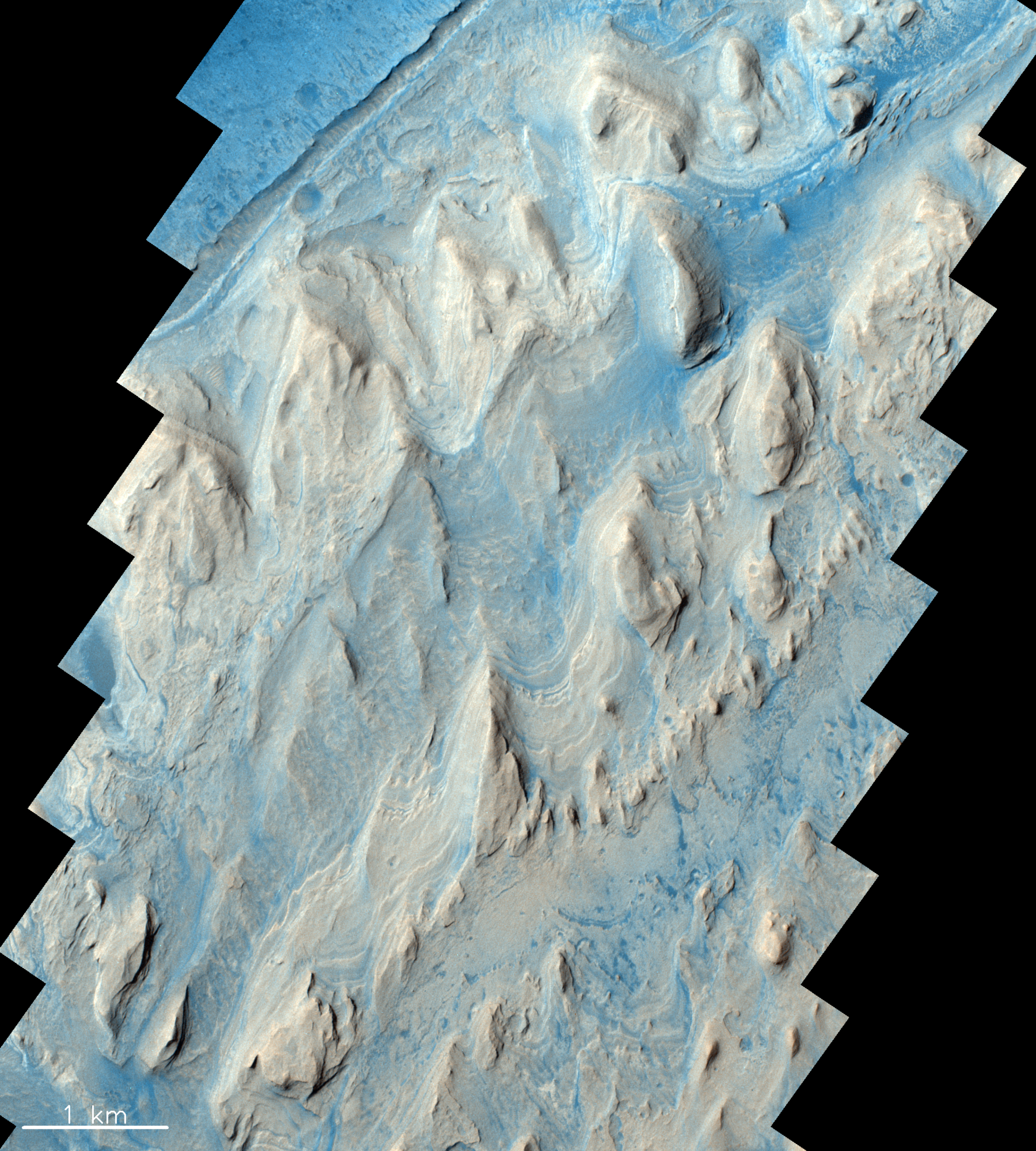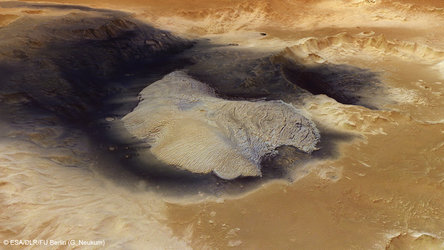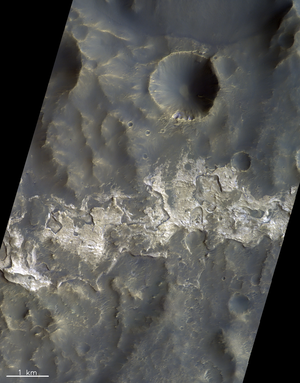

Layering in Gale Crater
Gale Crater, home of NASA's Curiosity Rover, is approximately 150 km in diameter and located near the boundary between the southern highlands and northern lowlands of Mars. The crater contains a massive central mound that contains a kilometres-thick layered sequence of sedimentary rocks that provide evidence for a changing climate over the planet’s history. Studies indicate that it transitioned from wetter conditions in which water-bearing minerals formed, to the drier climate conditions observed today.
The exposed layers seen in this image, taken by the CaSSIS camera onboard the ESA/Roscosmos ExoMars Trace Gas Orbiter, are located on the west side of the Gale crater central mound. This section belongs to the so-called ‘Lower Formation’, which is characterised by abundant signatures of the presence of water as observed by the CRISM imaging spectrometer onboard NASA’s Mars Reconnaissance Orbiter. These transition from sulphate-bearing, to clay-sulphate mixtures, to sulphate-bearing rocks in the highest parts of the formation. The transitions are reflected here in the changing colours observed by CaSSIS.
The image is centred at 5.2ºS/137.2ºE and was taken on 20 July 2019. North is up.





